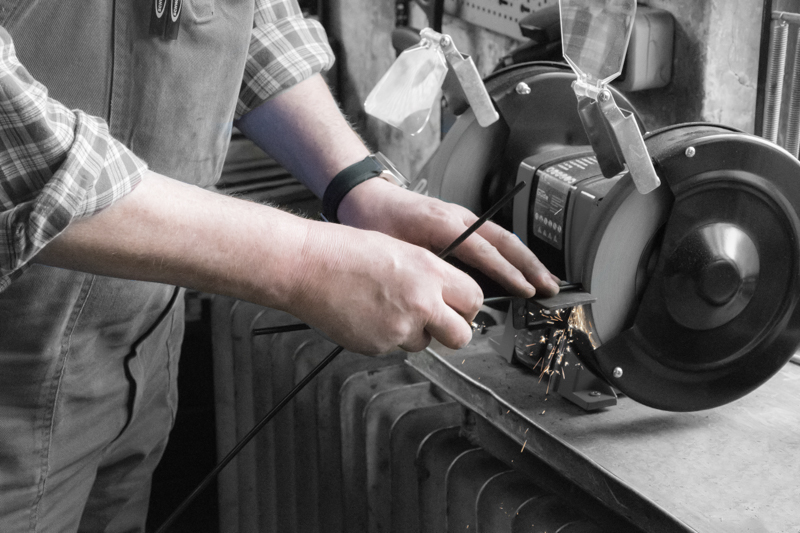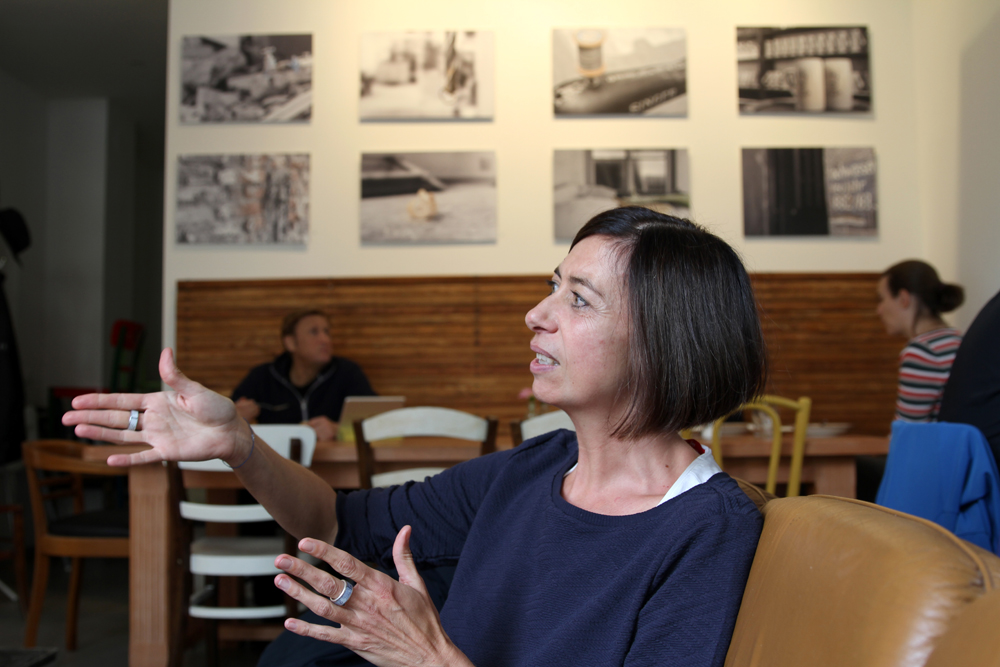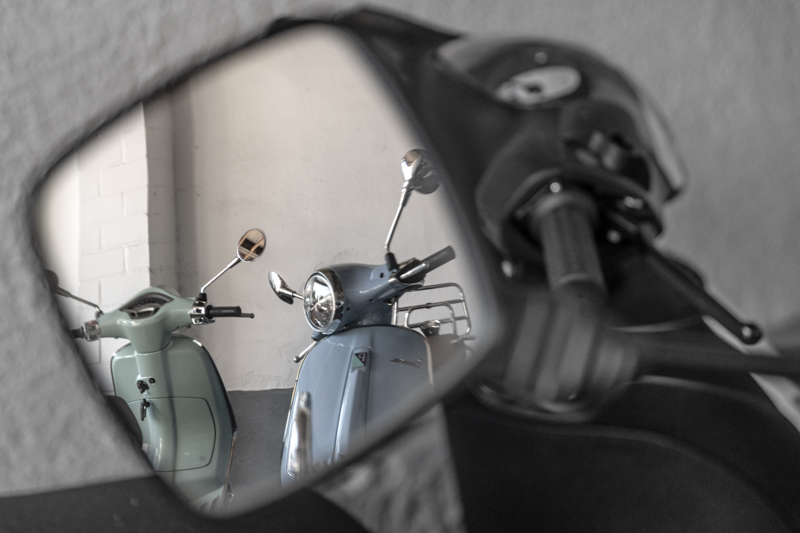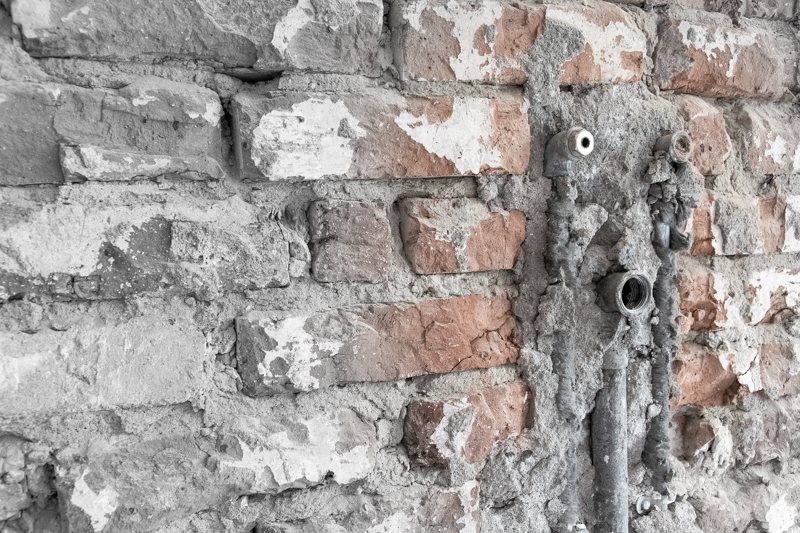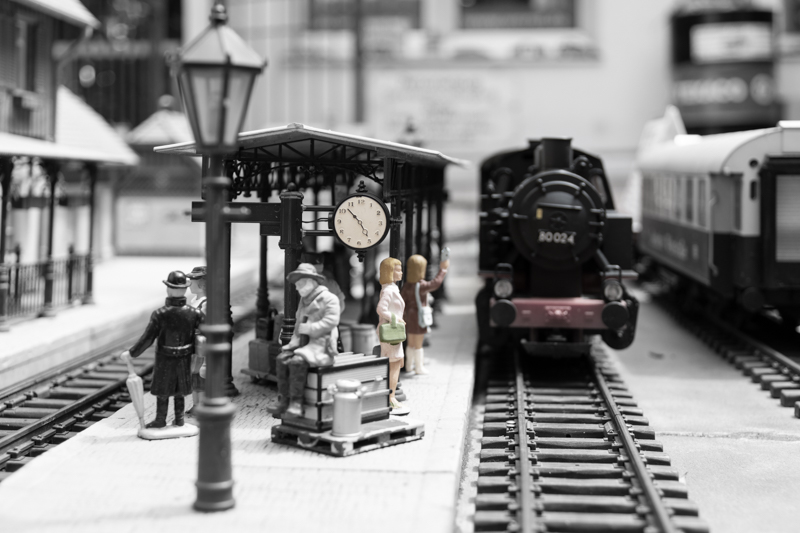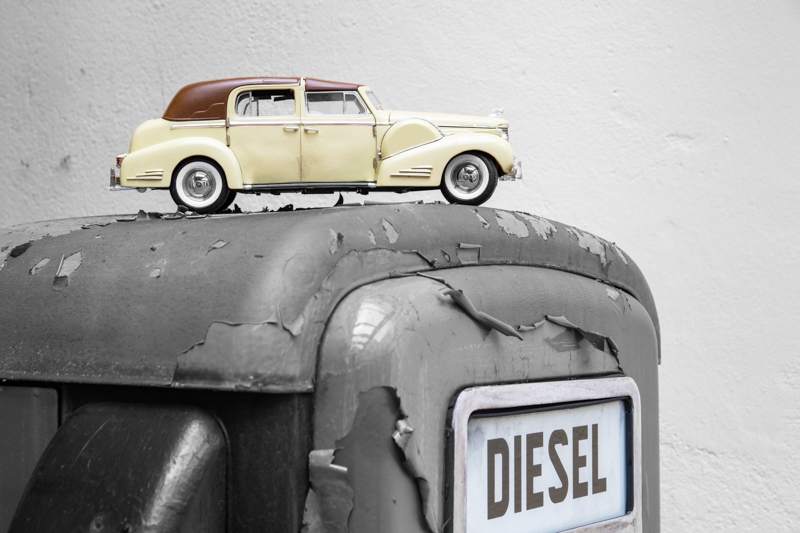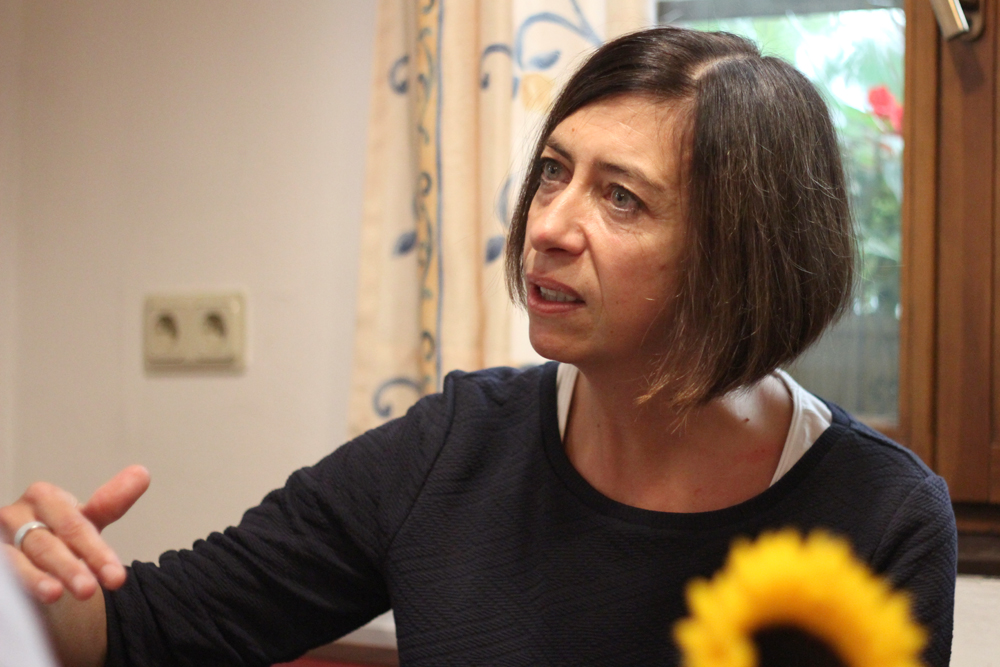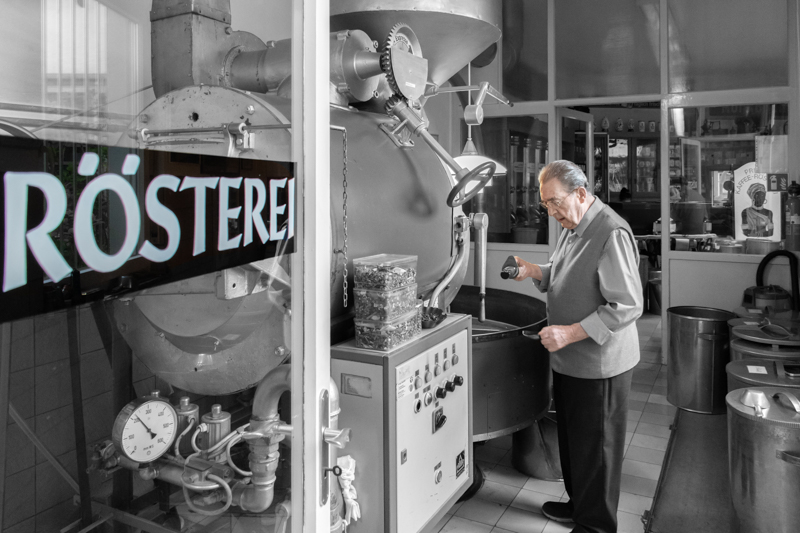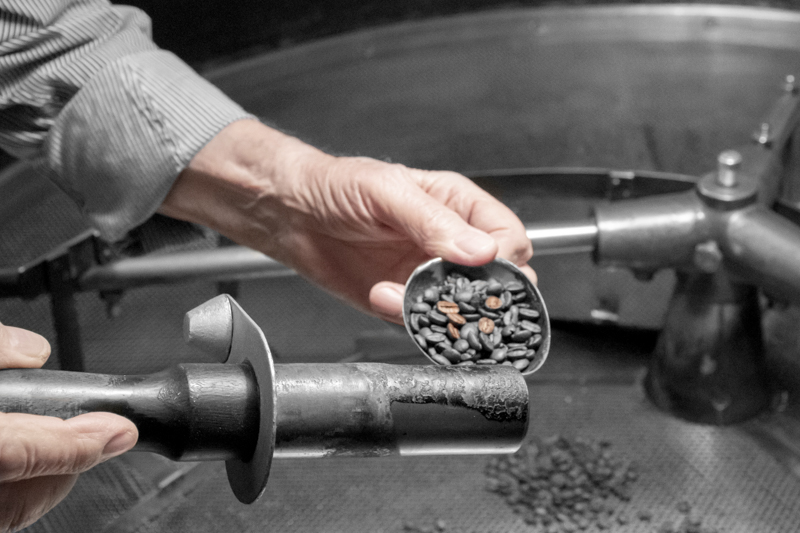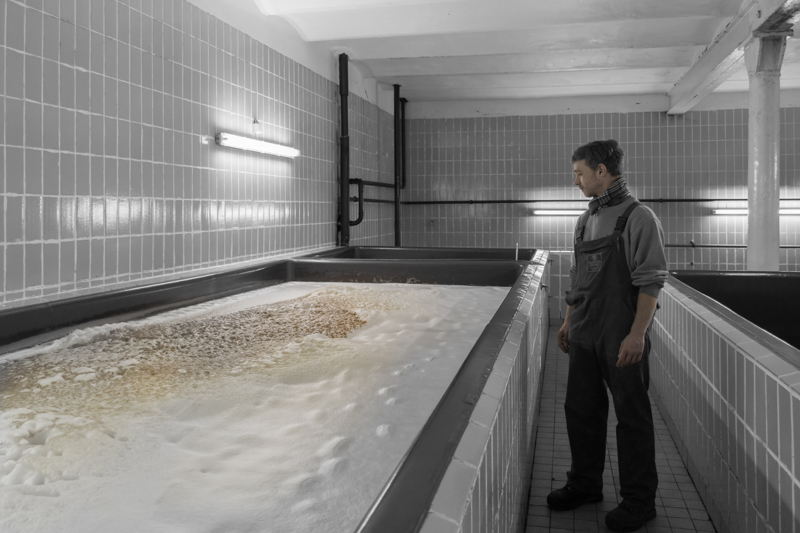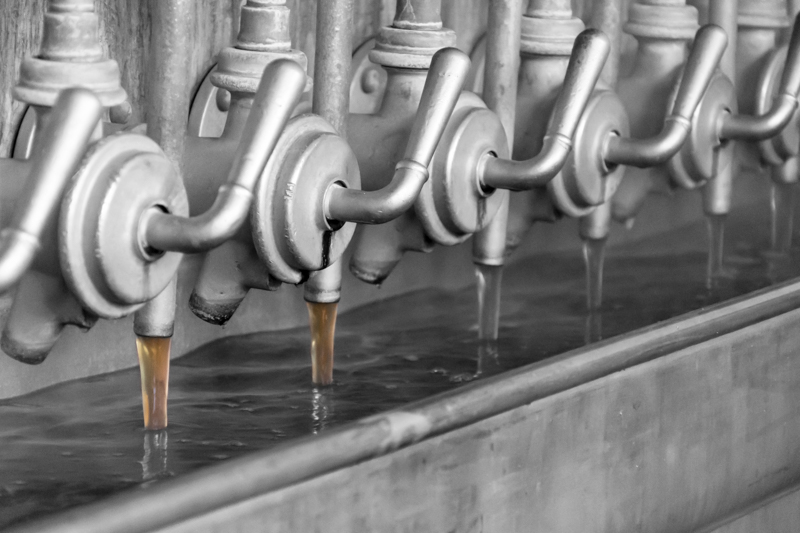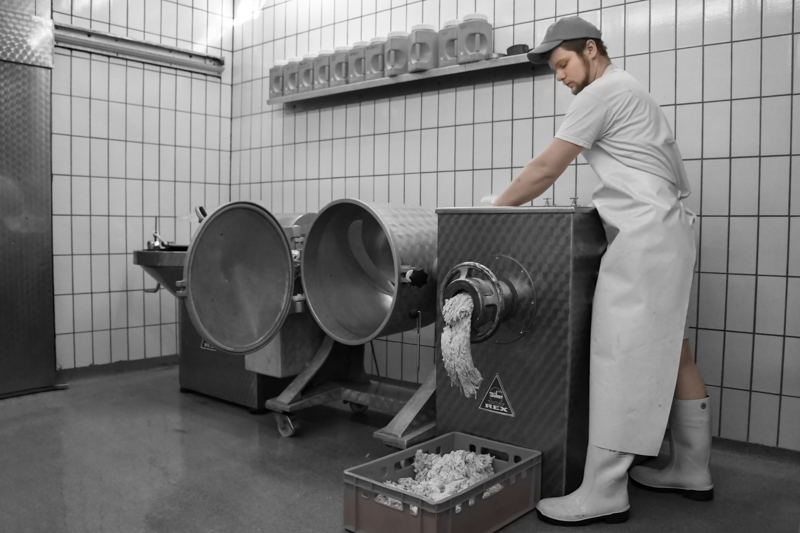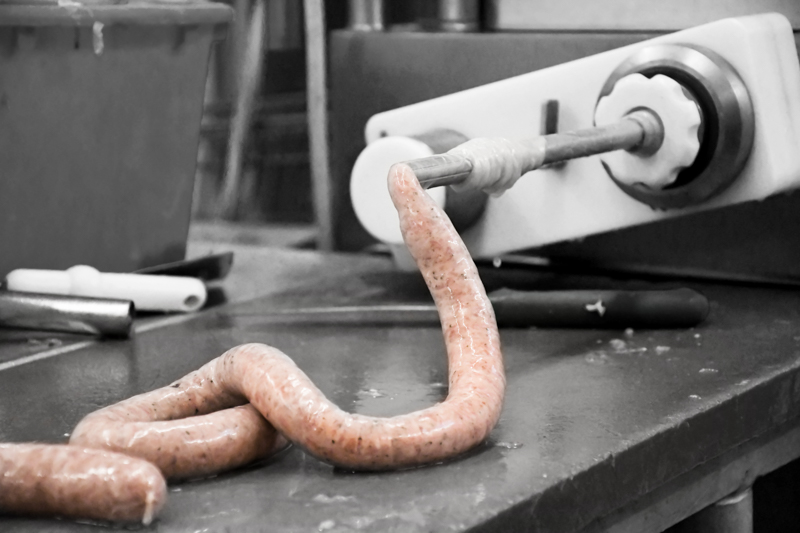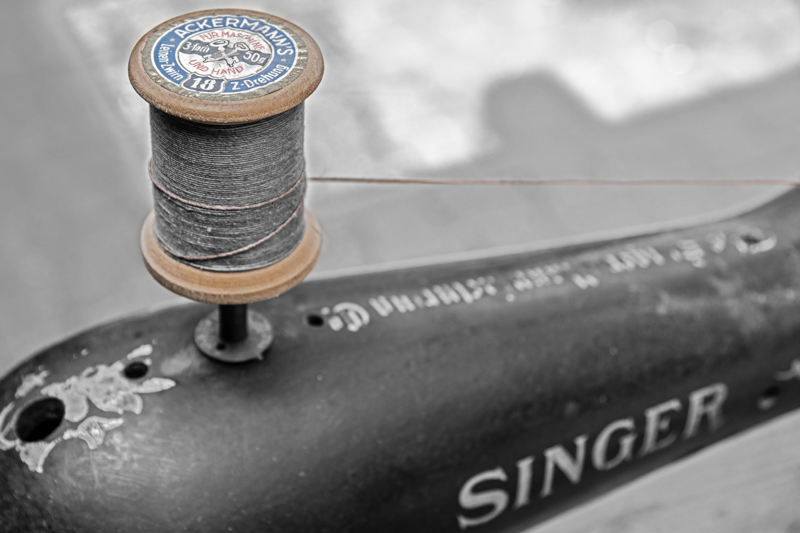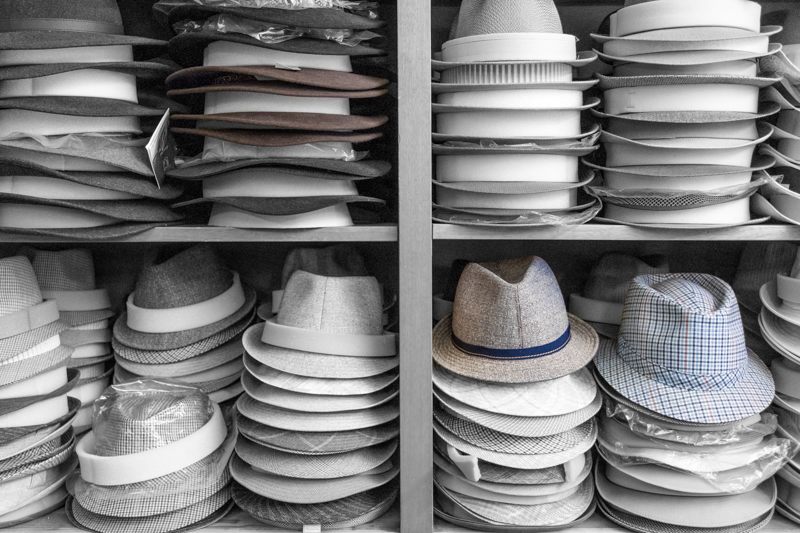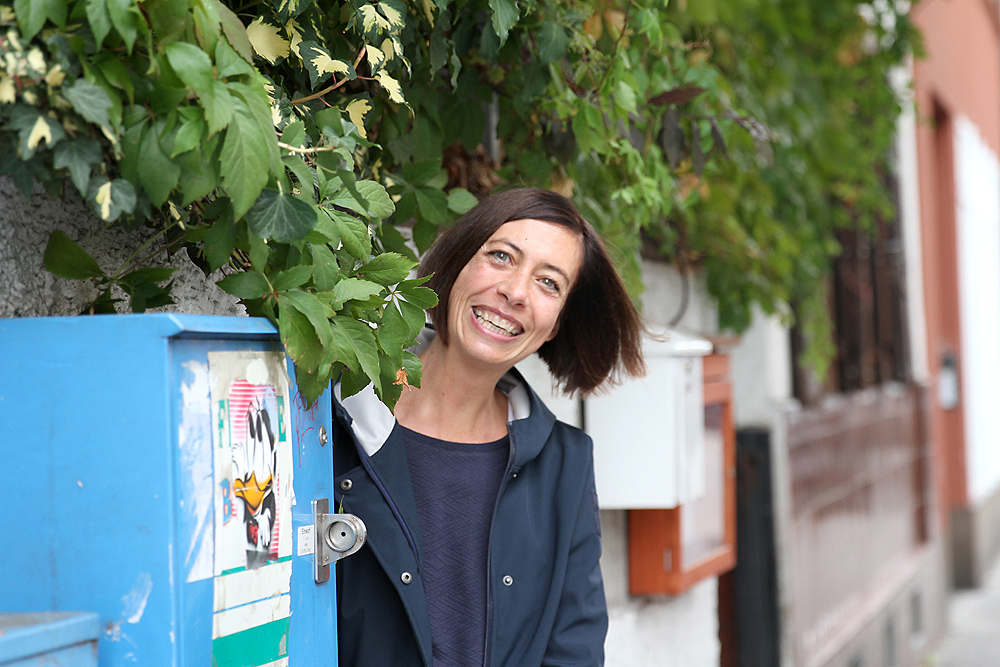“There are many jokes about Ludwigshafen—about it being the most ugly town in Germany,” Joëlle says. She doesn’t really feel offended, even as a native of Ludwigshafen. “Admittedly, Ludwigshafen is not the most beautiful town in visual terms,” she laughs. She does, however, feel offended by the narrow-minded view of her hometown. “Everybody knows about the vacancies in the town centre and everybody gets upset about another shop closing down and another 99-cent or mobile phone shop opening.” Joëlle wanted to reverse the focus—direct it at what lasts. “I often ride along Mundenheimer Straße. In this road, there are many shops that have been there for ages, such as the coffee roasting house ‘Kaffeerösterei Mohrbacher’ and the ‘Kichererbse’ wholefood shop.”
“There were so many of them!”
She started to make enquiries, asked friends and made a list. And all of a sudden “there were so many of them!” Joëlle was amazed by the number and had to narrow down the criteria. “Finally, I included only those shops in my list that are at least 50 years old. So the Kichererbse, for example, had to be taken off the list again.” The baker’s and confectioner’s shop Lanzet has supplied the Friesenheim part of town and its neighbourhood with fresh bread, cakes and filled chocolates since 1804. Customers can choose from a variety of more than 30 different bread types and enjoy the ‘Ludwigstaler’ speciality, a pastry filled with almonds and nougat. The private brewery Mayer in the Oggersheim part of town gives its beer all the time it requires to mature without any industrial mediators, and it has done so since 1846. Members of the carpenter’s workshop Oberst in the Rheingönheim part of town are the fourth generation to manufacture fitted furniture, windows and doors. And for decades, the toys shop Spielwaren Werst as a famous specialist shop in Germany has made the eyes of children—and adults—shine with joy, offering model vehicles and railways.

Another candidate on the list is the ‘Maffenbeier’ that Joëlle is stopping off in right now. The restaurant in Ludwigshafen-Hemshof is 130 years old and half the neighbourhood gathers here for lunch, as they always have—the elegantly dressed, elderly couple just like the group of apprentices sitting at another table. The bar is made of dark timber, the curtains are designed with a floral pattern and the food smells like grandma’s dishes used to smell. Joëlle came here and to all the other businesses without her camera at first and introduced herself and her project. “Everybody, literally everybody, found it a great idea.” She visited the places for a few times and several hours. “I need lots of time. Usually I just sit and watch for a while at the beginning.”
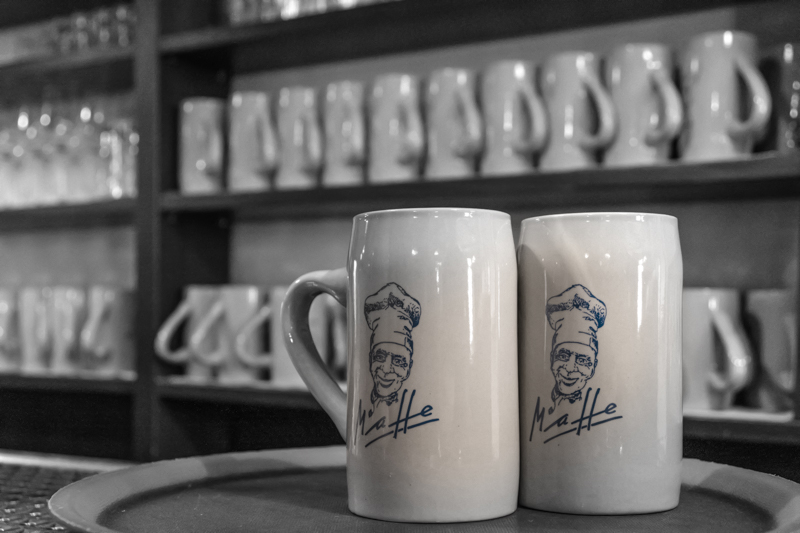
Restaurant Maffenbeier, around 130 years old
Joëlle is an infant school teacher in Ludwigshafen-Pfingstweide. “However, I have held cameras in my hands for as long as I can remember.” At a certain time she wanted to broaden her abilities beyond automatic mode and took all available photography lessons at the Volkshochschule (adult education centre). When there were no more courses left to take, she registered for a study programme at the Online-Schule für Gestaltung, an online college for design. Next to her professional life as a teacher. However, she’d never call her hobby, at which she is getting more and more professional, an extra burden. “Quite the opposite! I need it for a balance,” she says. She used to have difficulty switching off after her workday at school—especially since she has been teaching in a socially deprived area. “To me, my work at school is very meaningful. But it is pretty challenging at the same time. When I do photography I can switch off. I have to live in the present at that particular moment and think only of whatever I have in front of my camera.”
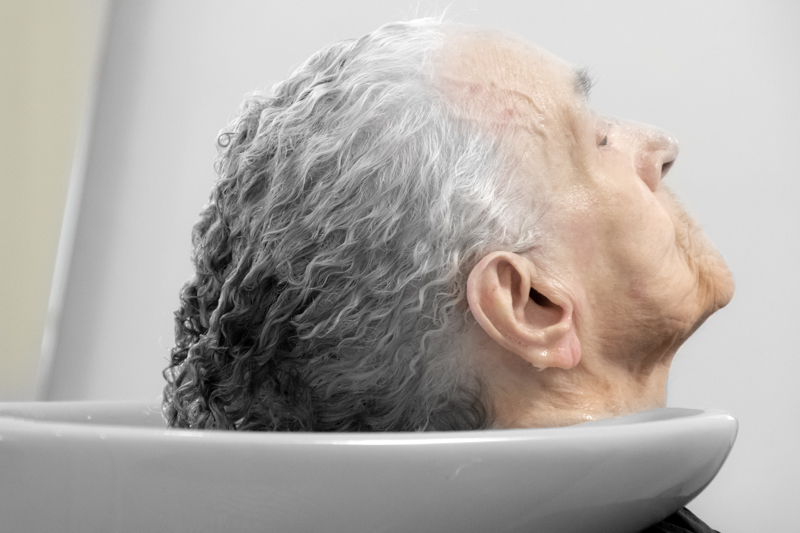
Hoferer hairdresser, 1932
And this attention is visible in her pictures—her interest in even the tiniest detail inside a particular room. Joëlle’s face becomes full of expression and her gestures become bigger as she talks about the businesses that she visited for her project. She tells us that the most long-standing client of Hoferer hairdresser in Ludwigshafen-Oppau has her hair permed exactly the same way it was done decades ago; and why the brushes, which the gilding professionals of the Galerie Lauth use, require hair of squirrels; or that beans at the coffee roasting house Mohrbacher are still sorted by hand. “I have learnt so much during my work for this project. These businesses still have a special connection to the things they produce or to their clients. This really touched me.”
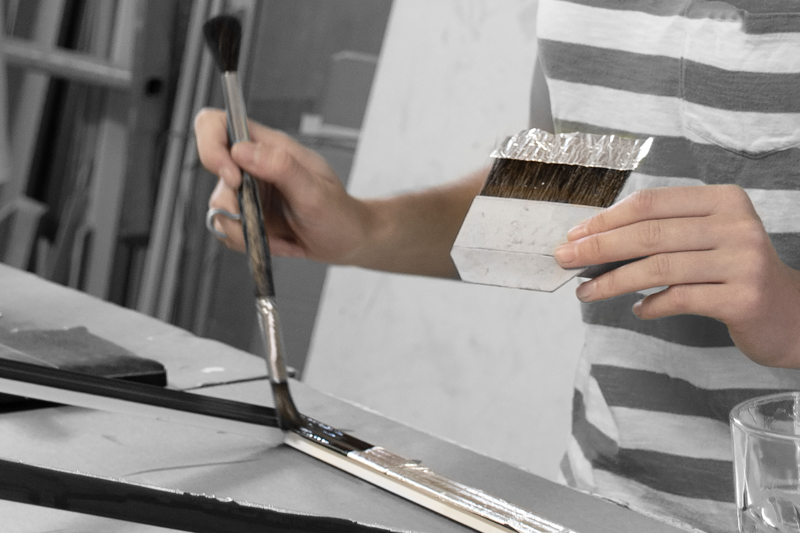
Galerie Lauth, 1948
Back at home Joëlle pays a visit to her motives for a second time—at the computer. “I enjoy the process that comes after the visit: sorting out, selecting, editing.” Her photos are in black-and-white terms mainly. However, there is always a detail that is left in colour, even though in a faint version of the colour–a coffee bean, a person’s skin, sparks caused by grinding work. This way Joëlle wants to make the observer pause and take a second look, a closer look. Like herself. The photographer goes on to tell us that she witnessed a conversation at her photo exhibition: “Oh look,” a women told her husband, “the Spielwaren-Werst toy shop! We should definitely go there again!” Joëlle smiles with content.
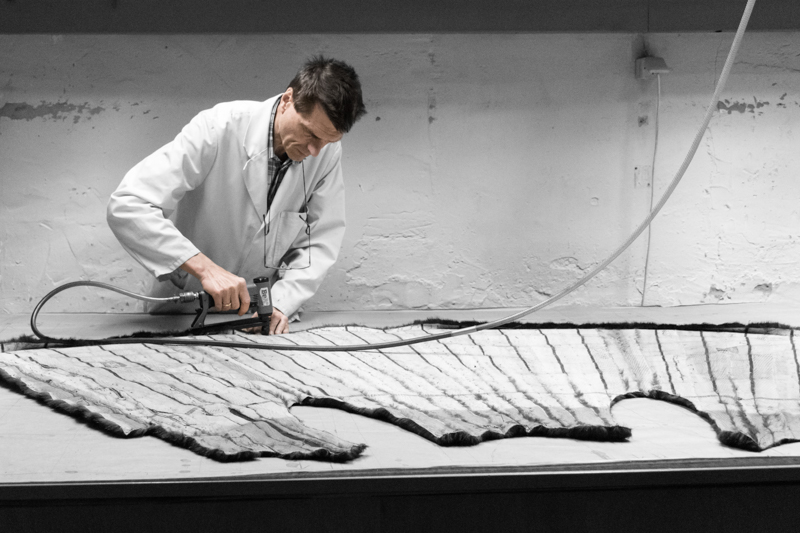
Schad Fashion and Accessories, 1888
The collection ‘seit by side’ was originally created for the cultural event ‘Ludwigshafener Kultursommer’, and so was the collection about homeless people in Mannheim and Ludwigshafen. For another occasion, the ‘Tag des offenen Denkmals’ (monument’s open day), she created an installation together with sound artist Karin Maria Zimmer that made the experiences of 19 contemporary witnesses of the Second World War visible and audible in the bunker at Ruthenplatz. “I really like project work, because I enjoy taking a good and comprehensive look at a certain topic.” The topic of the next Kultursommer, however, is causing her quite a headache. “Everything I did so far was somehow linked to Ludwigshafen.” For the topic ‘Kompass Europa: Nordlichter’ (Compass Europe: Northern Lights) she will have to go beyond the boundaries of her town. “It won’t be sufficient to go up to Ludwigshafen-Pfingstweide,” in this case, even though it is the most northern part of town.
www.facebook.com/JoelleOechsle
